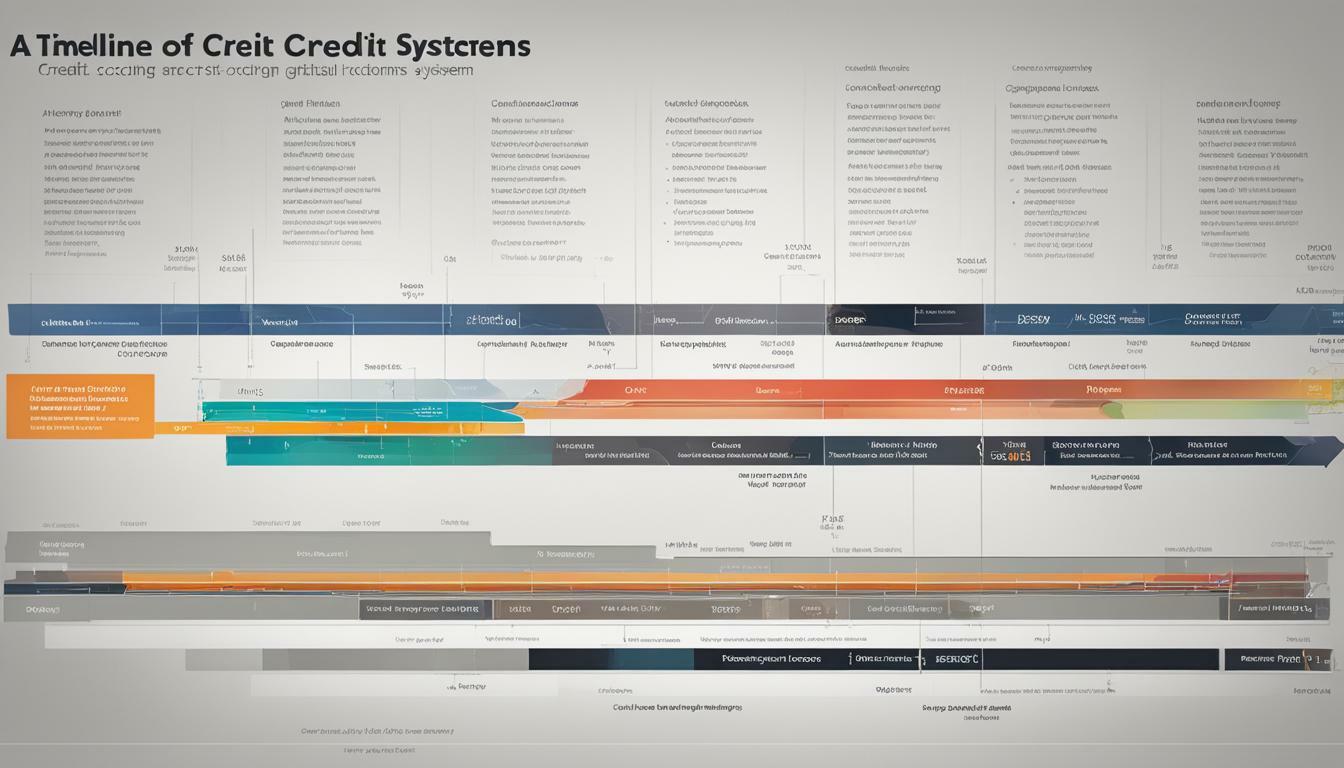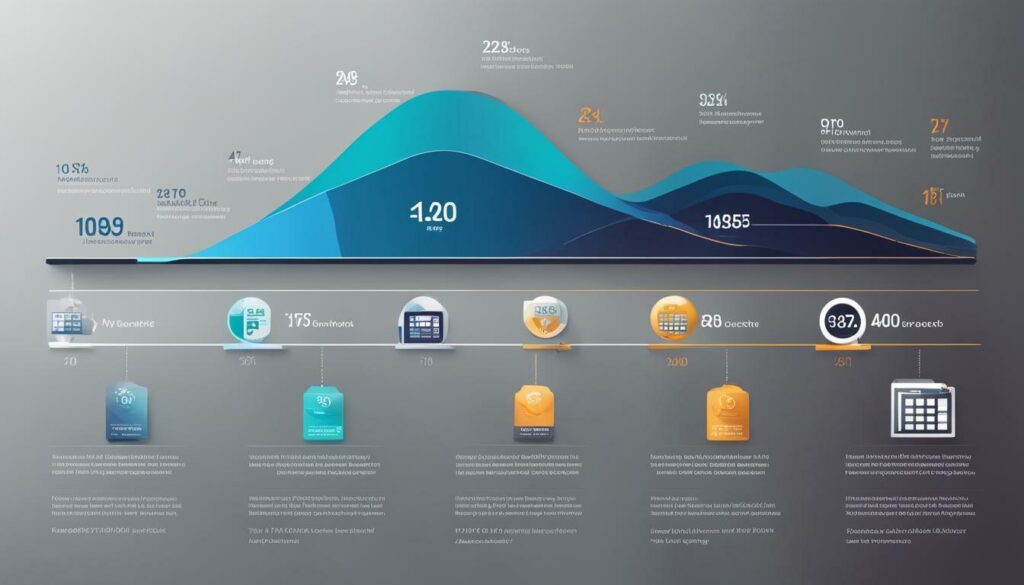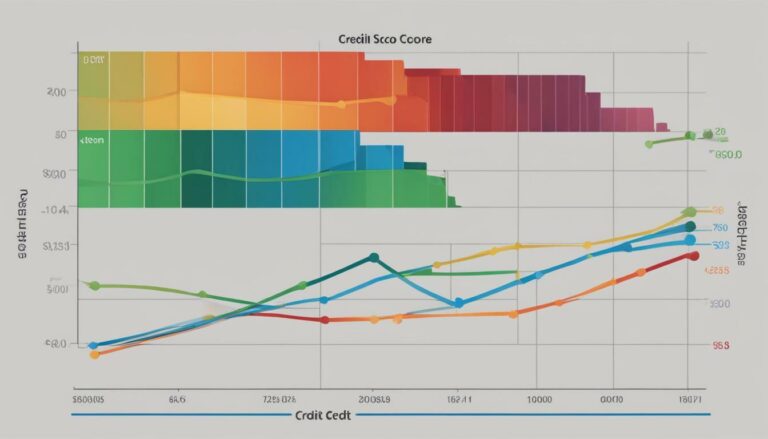Unraveling The Evolution of Credit Scoring Over Decades

Credit scoring has undergone significant changes and advancements over the past few decades, shaping the landscape of personal finance in the United States. Initially designed to be a fair and objective measure of creditworthiness, credit scores have now become a powerful tool that can have both positive and negative effects on individuals and communities.
Throughout history, credit scoring trends and models have evolved to meet the changing needs of lenders and borrowers. From the early days of manual credit reporting to the computerization of credit scoring in the 1960s, the industry has witnessed significant transformations.
Today, credit scoring algorithms consider various factors such as payment history, amounts owed, length of credit history, new credit, and credit mix to generate credit scores. The most widely used type of credit score is the FICO score, which ranges from 300 to 850. Over time, efforts have been made to incorporate additional data, like recurring payments, to provide a more comprehensive view of an individual’s creditworthiness.
However, despite these advancements, there are still millions of Americans who are considered credit invisible due to a lack of credit history. This disproportionately affects Black, Hispanic, and low-income individuals, further widening the disparities in credit scoring.
Key Takeaways:
- Credit scoring has evolved significantly over the years, becoming a crucial aspect of personal finance in the United States.
- The history of credit reporting and scoring dates back to the 19th century, with the computerization of credit reporting in the 1960s marking a significant milestone.
- FICO scores, ranging from 300 to 850, are the most commonly used type of credit score today.
- Efforts have been made to include additional data to improve credit scores, but credit invisibility remains a challenge, particularly for marginalized communities.
- The disparities in credit scoring have a disproportionate impact on people of color and low-income individuals, perpetuating economic inequalities.
Historical Changes in Credit Scoring
Credit scoring has come a long way since its inception, with significant improvements in techniques and methods that have revolutionized the way creditworthiness is assessed. In the early days of credit scoring, manual credit reporting was the norm. The Mercantile Agency and Bradstreet Company pioneered the practice of commercial credit reporting in the 19th century. However, it wasn’t until the computerization of credit reporting in the 1960s that the industry underwent a major transformation.
🚨 TUIC Errors + Low Credit Score?
CreditScoreIQ helps you build credit faster by reporting utility bills to all 3 bureaus—while you dispute errors.
Start Building Credit Today →The computerization of credit reporting allowed for the consolidation of vast amounts of financial data, enabling lenders to make more informed decisions about a borrower’s creditworthiness. This marked the beginning of the use of credit scores. While it took some time for credit scoring to gain popularity, the introduction of FICO scores revolutionized the industry. Today, FICO scores are the most widely used type of credit score, ranging from 300 to 850.
FICO scores consider various factors to determine creditworthiness, including payment history, amounts owed, length of credit history, new credit, and credit mix. Efforts have been made to include additional data, such as recurring payments, to further refine credit scores. These advancements in credit scoring methods have enabled lenders to make more accurate assessments of an individual’s creditworthiness, supporting fair lending practices.

Despite these improvements, there are still millions of Americans who are considered credit invisible, meaning they have a lack of credit history. This disproportionately affects Black, Hispanic, and low-income individuals, further perpetuating existing disparities. Recognizing this, there have been ongoing efforts to address the challenges and limitations of credit scoring, aiming to create a more inclusive and equitable system.
Understanding the historical changes in credit scoring is crucial as credit reports increasingly inform various life decisions. It is essential for individuals to be aware of their credit scores and the factors that contribute to them. Additionally, efforts to regulate and reform the credit scoring industry are constantly evolving to promote fairness and reduce potential biases and discrimination.
Summary:
- Credit scoring has evolved significantly, with advancements in techniques and methods.
- Computerization of credit reporting in the 1960s revolutionized the industry.
- FICO scores are the most widely used type of credit score, ranging from 300 to 850.
- Efforts have been made to include additional data to improve credit scores.
- Despite improvements, credit invisibility disproportionately affects marginalized communities.
- Regulation and reform are ongoing to address challenges and promote fairness.
By understanding the historical changes in credit scoring, individuals can better navigate the credit system and advocate for equitable practices.
| Credit Scoring Advancements | Credit Scoring Methods | Credit Scoring Algorithms |
|---|---|---|
| The computerization of credit reporting | FICO scores | Payment history |
| Efforts to include additional data | Length of credit history | Amounts owed |
| New credit | Credit mix |
The Impact of Technology on Credit Scoring
Technology has played a crucial role in the evolution of credit scoring, transforming the way creditworthiness is assessed and shaping the standards and practices in the industry. Advancements in technology have enabled a more efficient and accurate assessment of an individual’s creditworthiness, leading to the development of sophisticated credit scoring models. These models incorporate multiple data sources and complex algorithms to provide lenders with a comprehensive evaluation of a borrower’s credit risk.
One significant advancement in credit scoring is the integration of machine learning and artificial intelligence techniques. These technologies enable the analysis of vast amounts of data in real-time, allowing lenders to make more informed and timely credit decisions. Machine learning algorithms can identify patterns and trends in credit data that may not be apparent to human analysts, resulting in more accurate credit scores. Additionally, automated systems can quickly process credit applications, reducing the time and effort required for manual underwriting.
The evolution of technology has also paved the way for the inclusion of alternative data in credit scoring. Traditional credit scoring models primarily rely on data from credit reports, such as payment history and credit utilization. However, with the advent of technology, lenders can now consider additional data points, such as utility payments, rental history, and even social media activity. This broader range of data provides a more comprehensive picture of an individual’s creditworthiness, especially for those with limited credit history or no credit at all.
While the impact of technology on credit scoring has been largely positive, it is not without challenges. Concerns have been raised about the potential for algorithmic bias, where certain groups may be unfairly disadvantaged due to the way algorithms are trained or the data that is used. This highlights the importance of ensuring fairness and transparency in credit scoring practices, as well as ongoing monitoring and evaluation of the algorithms to mitigate any biases that may arise.
| Advancements in Technology | Impact on Credit Scoring |
|---|---|
| Machine Learning and AI | More accurate credit assessment and quicker decision-making |
| Inclusion of Alternative Data | Broader evaluation of creditworthiness for individuals with limited credit history |
| Algorithmic Bias | Ensuring fairness, transparency, and mitigation of biases in credit scoring |
In conclusion, technology has revolutionized credit scoring, enabling lenders to assess creditworthiness more effectively and efficiently. The integration of machine learning and AI, along with the inclusion of alternative data, has expanded the scope of credit scoring models, providing a more comprehensive assessment of an individual’s credit risk. However, it is crucial to address concerns related to algorithmic bias and ensure fairness in credit scoring practices. As technology continues to advance, the credit scoring industry must strive for continuous improvement and regulation to promote equity and transparency.

Despite its widespread use, the credit scoring system has perpetuated racial and economic injustice, with people of color facing significant disparities in credit scores and limited access to economic opportunities. The homeownership gap remains wide, with Black consumers reporting lower credit scores than their white counterparts. This disparity is a result of systemic bias and exclusion within the credit scoring system, which disproportionately affects communities of color.
Poor or nonexistent credit has far-reaching implications, extending beyond the ability to secure loans or credit cards. It affects mental health, personal relationships, and economic mobility. Individuals with poor credit often face higher interest rates, limited access to housing, and difficulty finding employment. This perpetuates a cycle of economic disadvantage and limits the opportunities available to marginalized communities.
To compound the issue, credit scoring models have demonstrated biases that result in unequal treatment. For example, studies have shown that credit scoring algorithms tend to penalize individuals with lower incomes or limited credit history, which disproportionately affects Black, Hispanic, and low-income individuals. This further exacerbates the existing disparities in credit scores and access to economic resources.
Addressing these disparities and challenges in credit scoring is crucial for promoting racial and economic equity. It requires a comprehensive reevaluation of the current system and the development of alternative models that factor in a wider range of data points beyond traditional credit history. Additionally, corporations and lenders must actively work towards eliminating bias and discrimination in lending practices to ensure fair access to credit for all individuals, regardless of their race or socioeconomic status.
Table: Credit Scoring Disparities by Race
| Race | Average Credit Score |
|---|---|
| White | 720 |
| Black | 650 |
| Hispanic | 680 |
| Asian | 740 |
Source: Image
Conclusion
The evolution of credit scoring over decades has had a profound impact on personal finance, with efforts to reform the industry and address disparities still ongoing. Credit scoring has become a pervasive and influential factor in modern life, initially designed to be a race-neutral, data-driven measure of creditworthiness. However, it has disproportionately affected people of color due to systemic bias and exclusion.
The homeownership gap remains wide, with Black consumers reporting lower credit scores than their white counterparts. This disparity highlights the need for reform within the credit scoring system. Poor or nonexistent credit brings far-reaching implications, affecting mental health, personal relationships, and economic opportunities.
The credit scoring system predominantly serves the interests of commercial lenders, who continue to discriminate against Black borrowers. To address racial and economic injustice, corporate America should abandon credit scoring and work towards true equity. It is important to understand the history of credit reporting and scoring, which dates back to the 19th century with the advent of commercial credit reporting by the Mercantile Agency and Bradstreet Company. The computerization of credit reporting in the 1960s marked a significant milestone, leading to the consolidation of the industry.
Credit scoring took longer to gain popularity, with FICO scores eventually becoming the most widely used type of credit score. Today, FICO scores range from 300 to 850 and consider various factors such as payment history, amounts owed, length of credit history, new credit, and credit mix. Efforts have been made to include additional data, such as recurring payments, to improve credit scores.
However, there are still millions of Americans considered credit invisible due to a lack of credit history, disproportionately affecting Black, Hispanic, and low-income individuals. As credit reports increasingly inform various life decisions, ongoing efforts to regulate and reform the industry have been met with mixed success. It is crucial to continue pushing for credit scoring reforms and equitable practices to ensure a fair and inclusive financial system for all.
FAQ
Q: What is credit scoring?
A: Credit scoring is a method used by lenders to assess an individual’s creditworthiness based on their credit history and other factors. It involves assigning a numerical score to represent the likelihood of a borrower repaying their debts.
Q: How has credit scoring evolved over the years?
A: Credit scoring has evolved from manual credit reporting in the 19th century to the computerization of credit scoring in the 1960s. Advancements in technology have influenced the development of credit scoring methods and algorithms.
Q: What factors are considered in credit scoring?
A: Credit scoring models, such as FICO scores, consider factors such as payment history, amounts owed, length of credit history, new credit, and credit mix. Some models also take into account recurring payments and other additional data.
Q: Are there disparities in credit scoring?
A: Yes, there are disparities in credit scoring, with people of color often facing lower credit scores compared to white individuals. Systemic bias and exclusion have contributed to these disparities.
Q: What are the implications of poor credit?
A: Poor credit can have far-reaching implications, affecting mental health, personal relationships, and economic opportunities. It can limit access to loans, mortgages, and other financial services.
Q: What is being done to address the challenges in credit scoring?
A: Efforts are underway to regulate and reform the credit scoring industry. However, progress has been mixed, and more work is needed to address the racial and economic injustices within the system.
Ready to Improve Your Credit?
Disputing TUIC errors is step one. Step two? Boost your score by reporting utility payments with CreditScoreIQ.
Get Started Now (Only $1 Trial) →3-bureau reporting • $1M identity insurance • Dark web monitoring





